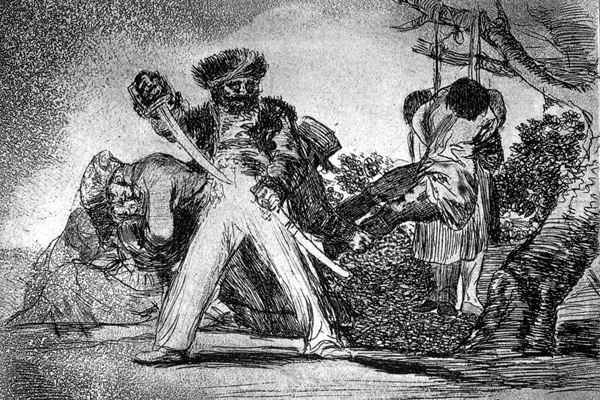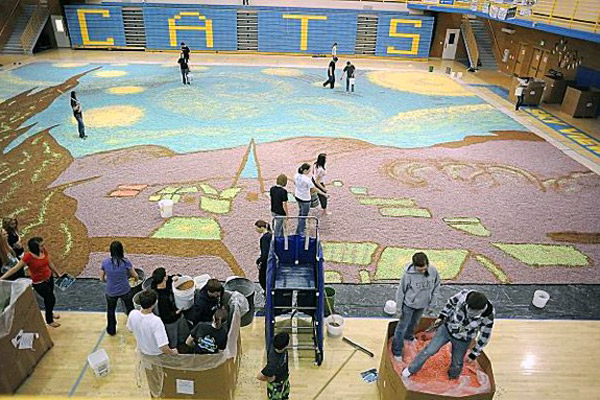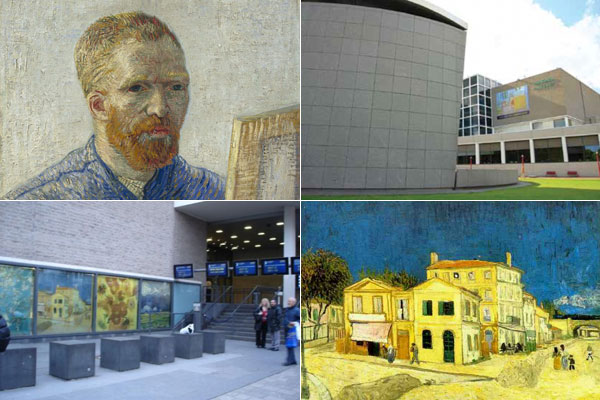
We’re just a few days away from the official release of our next volume of globetrotting goodness—our “Art + Travel Europe: Step Into the Lives of Five Famous Painters”. We’re so excited about the launch of this title, which walks you through the lives of artists like Goya, Van Gogh, Vermeer, Caravaggio, and Munch through walking tours of the places they called home—Madrid, Arles, Delft, Rome, and Oslo—that we thought we’d give you a sneak peek. Even though our guidebook offers an in-depth look at Vincent Van Gogh’s tortured but productive time in Arles, France, today we’re headed to Amsterdam, home of hash bars, Anne Frank, and the only museum in the world fully dedicated to the works of that one-eared master of oils, color, and light and a tribute to family unity.
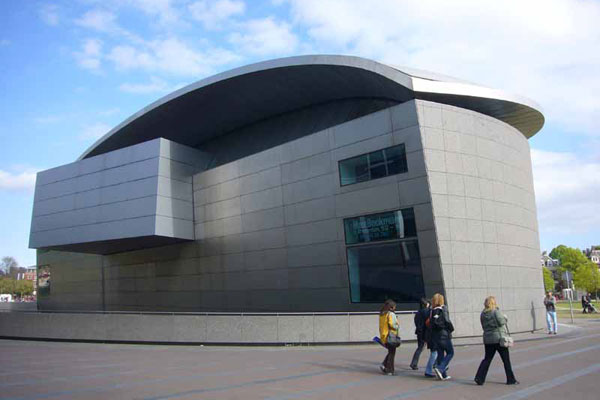
Home of largest collection of the painter’s art in the world, the Van Gogh Museum exists, in part, because of the particular history of the Van Gogh clan. The less successful of two brothers, Vincent Van Gogh struggled all his life with depression and mania, relying on his brother, Theo, a popular art dealer, for security and direction. Even as his art soared to new heights during his stay in Arles, Vincent’s rapidly growing catalog of work piled up in Theo’s Paris gallery unsold. It was a difficult relationship, but a loving one. When Theo died only a few months after Vincent in 1890, his young widow, Johanna Van Gogh-Bonger, moved back to the Netherlands, taking a treasure trove of paintings, drawings, and letters with her. There, she devoted herself to promoting both Van Gogh’s reputations and value through memorial exhibitions, careful loans, and sales to museums all over Europe. When she died in 1925, the remaining family collection reverted to her son, Vincent Willem, an engineer who lent the collection to the Stedelijk Museum and other important museums around the world. Always, the works were kept under the careful eye of a concerned, proud family that has been a force in the country even in modern times (Theo’s great-grandson, Theodoor Van Gogh was the controversial film director assassinated in 2004).
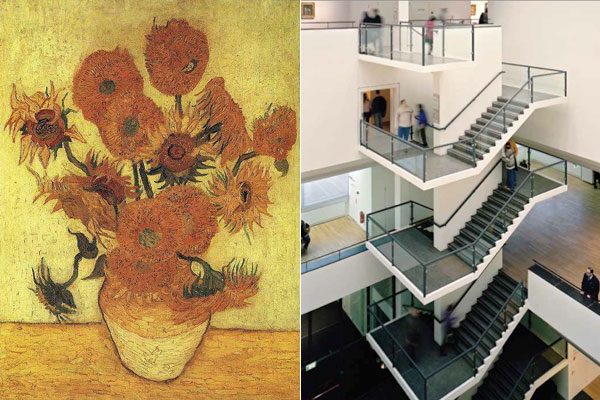
After Van Gogh’s work became a fully recognized part of art and Dutch histories, the government offered to create a home for the works in 1962. Designed by renowned De Stijl architect Gerrit Rietveld, the new Van Gogh Museum opened in 1973 with over 200 of Van Gogh’s paintings, plus drawings, letters, and his collection of Japanese prints. and works by the artist’s influences, friends, contemporaries, and admirers. A second building, the Exhibition Wing, was added in 1999. Designed by with Eastern influence by Japanese architect Kisho Kurokawa, it’s a tribute to Van Gogh’s enthusiasm for Japanese prints and the important influence the country’s art had on his work and philosophy. A beautiful modern structure honoring one of Modern Art’s true heroes, it’s interesting to think that without an art-dealing brother, a caring sister-in-law, and a devoted nephew, Vincent Van Gogh’s work probably never would have achieved its current level of renown and this vital complex in the heart of Amsterdam never would have never existed.
For an exhaustive tour of Van Gogh’s time in Arles and a guide to his work and life in Amsterdam, pre-order a copy of our “Art + Travel Europe: Step Into the Lives of Five Famous Painters”.
Visit the Van Gogh Museum at
7 Paulus Potterstraat
Amsterdam, Netherlands
+31 20-570-5200
www3.vangoghmuseum.nl
Some above text provided by Kristin Hohendadel.
Images:
Top (clockwise from upper left): “Self-Portrait as an Artist”, Vincent Van Gogh, 1888, courtesy of the Van Gogh Museum, Exterior of the Van Gogh Museum, courtesy of The Van Gogh Museum, “The Yellow House”, 1888, courtesy of the Van Gogh Museum, Exterior of the Van Gogh Museum, courtesy of Ryancom.
Middle: Exterior of the Exhibition Wing of the Van Gogh Museum, courtesy of e-architect.com
Bottom (left to right): “Sunflowers”, Van Gogh, 1889, courtesy of the Van Gogh Museum, interior of the Van Gogh Museum, courtesy of the Van Gogh Museum.
Home » Museyon: Art + Travel » Arles » Keeping it in The Family: The Van Goghs and The Van Gogh Museum
Tagged with: Amsterdam architecture Arles Art + Travel de stijl Delft France gerrit rietveld museums painting theo van gogh van gogh museum vang gogh vincent van gogh
 MUSEYON BOOKS Smart City Guides for Travel, History, Art and Film Lovers
MUSEYON BOOKS Smart City Guides for Travel, History, Art and Film Lovers
